Rome is a destination that offers countless attractions and activities. If you are thinking of spending a few more days there (the ideal period is 6-7 days), then we have a few extra suggestions, such as shopping at the Campo de’ Fiori market, a visit to the small island of Tiber and the Baths of Caracalla, a unique view through the Keyhole of the Knights of Malta and many more! With that many sites and activities, the capital of Italy holds the interest of every visitor unabated.
More
10 more attractions in Florence
In order to fully experience the magic of Florence you will have to dedicate, ideally, 4-5 days. The city offers extra options, such as shopping at the local Mercato Centrale market, evening outings in the beautiful Oltrarno area, a tour in Palazzo Pitti & the Boboli Gardens, attendance at a traditional Wine Tour in Tuscany and more. Florence offers a slew of attractions and activities, so that you will certainly not find yourselves wondering “What do we do now?”!
Discover more attractions in Florence

Arcibasilica di San Giovanni in Laterano & Scala Sancta
The title that the church of San Giovanni in Laterano holds reveals its significance. Significance that is also portrayed in the sign that mentions that it is the “Mother and head of all churches in the city and in the world”. In the church, the coronation of the Popes used to take place until 1870, while today it is their official church. Its exterior decoration is impressive, with the Holy Door adorning its façade. From this door you can enter only if you are really lucky, as it opens every 25 years! Inside it is magnificent and all eyes turn to the 12 gigantic statues of the Apostles, as well as the ceiling. Make sure you visit it on Sunday morning, in order to attend the reverent mass. Furthermore, across from the church (NE side), there is the “Scala Sancta”, which is said to be the one that Jesus ascended when he was brought in front of Pontius Pilate. These 28 steps were transferred from Jerusalem and have been dressed with wood, so worshipers can climb them on their knees.
Note: If you would like it to be as less crowded as possible, visit it 1-2 hours before closing.
Suggested visit time: 30 minutes-1 hour
Open: Every day 07:00-19:00 (In the winter it closes 1 hour earlier)
Cost: Free
![]() The know-it-all says: In the church there is a wooden table, on which it is said that St. Peter used to celebrate Mass!
The know-it-all says: In the church there is a wooden table, on which it is said that St. Peter used to celebrate Mass!

Altare Della Patria-Piazza Venezia
The “Altar of the Fatherland” is one of the most important buildings of the neo-Roman era and it is dedicated to the first king of the unified Italy, Victor Emmanuel. Altare Della Patria is not only visible from many locations in the city, but also from the plane(!), which reveals that it is the largest and most imposing structure in Rome. Inside it, what stand out are the big statues, the huge spaces and the museum of Italian Unification (small entrance fee). But the spot that attracts thousands of visitors like a magnet is its terrace. From there, you can admire the most prominent monuments of Rome, paying a hefty price for the elevator*. The view from the top might not be that exciting, yet it still is a pleasant, alternative experience worth living. Finally, in front of the Altar you will find the bustling Piazza Venezia, a square full of life and colors, thanks to the slew of flowers that decorate its center.
Suggested visit time: 1-1.5 hours
Open: Every day 09:00-17:0
Cost: Altare Della Patria: Free *Terrace: 7€
![]() The know-it-all says: When the statue of Victor Emmanuel II was completed, 12 workers dined inside the horse’s belly!
The know-it-all says: When the statue of Victor Emmanuel II was completed, 12 workers dined inside the horse’s belly!
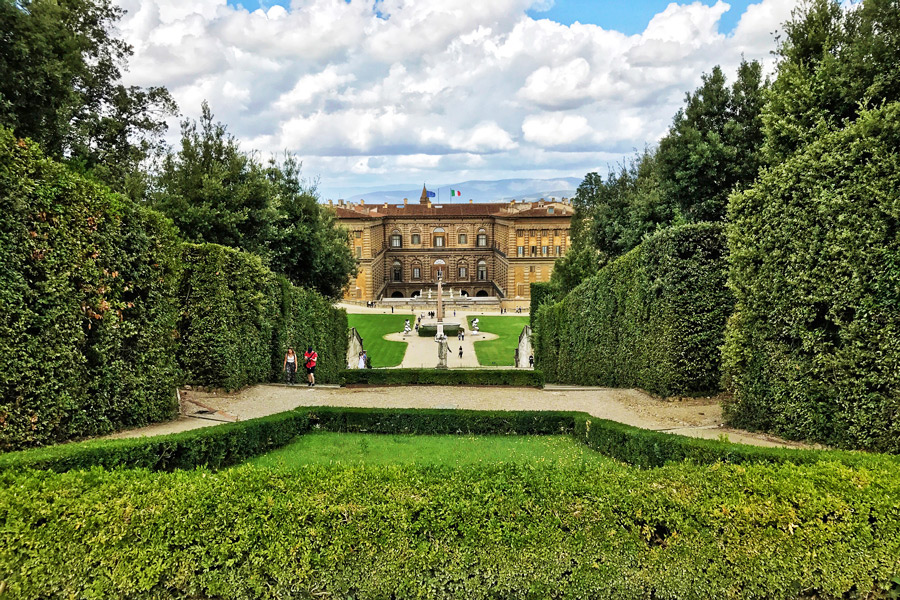
Palazzo Pitti & Boboli Gardens
Crossing Ponte Vecchio, towards Arno’s south side, the road will lead you to yet another impressive renaissance building, Palazzo Pitti. Even though its exterior does not come close in beauty to palaces such as the ones of Versailles or Hofburg, its interior adornment hides plenty of surprises. Every floor hosts a different “museum”, with paintings, garments, sculptures and porcelains, placed almost on top of one another. After you finish the long visit at the palace, take a walk around its lush green yard, namely the renowned Boboli gardens. In Florence’s largest oxygen source, apart from moments of relaxation, you can roam among arcades, fountains, statues and enjoy the wonderful panoramic view of the city. The Boboli gardens are connected to the Belvedere fortress, while they are also the starting point of the famous secret passageway Vasari Corridor.
Suggested visit time: 2-3 hours
Open: Palace: Tuesday-Sunday 08:15-18:50 / Gardens: Every day 08:15-16:30 (winter season), 08:15-19:30 (summer season) – Last entry 1 hour before closing. Closed: Palace: Monday, January 1st, May 1st and December 25th / Gardens: The first and last Monday of every month, January 1st, May 1st and December 25th
Cost: Palace: 8.50€, reduced 4.25€ / Gardens: 7.00€, reduced 3.50€ / Free with the Firenze Card.
![]() The know it all says: Every year, around 1,000,000 tourists visit the gardens!
The know it all says: Every year, around 1,000,000 tourists visit the gardens!
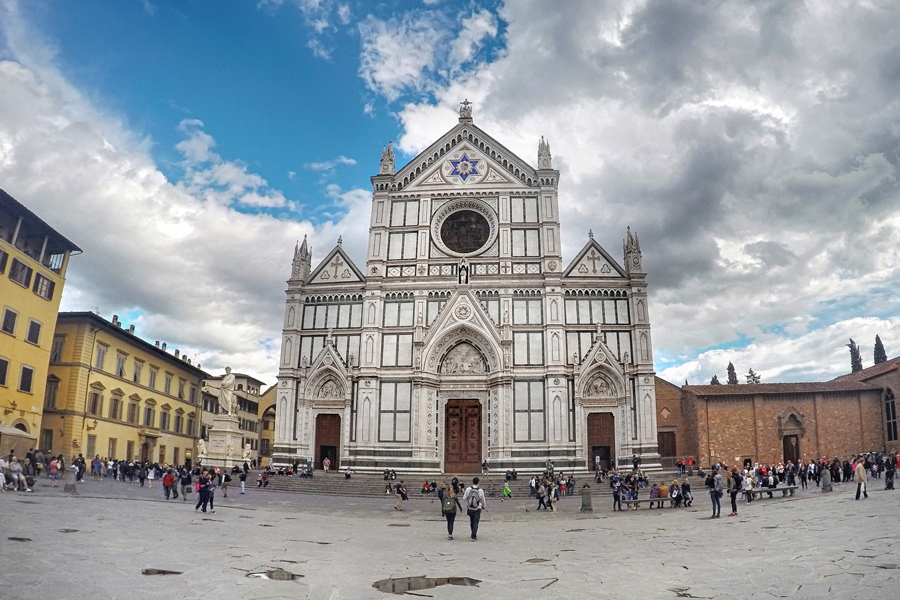
Basilica di Santa Croce
The Basilica di Santa Croce (Basilica of the Holy Cross) is among the most notable churches in Florence. It is located at one of the most central squares and stands out because of its imposing marble façade. Stepping into its enormous interior space you will find 16 chapels decorated with frescos, sculptures and paintings of great Italian artists like Giotto and Donatello. But its high visit rates are not only owed to its artistic adornment, but also to the tombs of Michelangelo, Machiavelli, Galileo and others, while the impressive cenotaph of the Italian poet, Dante, is also a crowd-magnet. After the tour, enjoy some coffee or ice-cream in one of the square’s shops and take a brief walk in the surrounding area.
Suggested visit time: 30 minutes-1 hour
Open: Monday – Saturday 09:30-17:00, Sunday and holidays 14:00-17:00
Closed: January 1st, Easter, June 13th, October 4th, December 25th & 26th
Cost: Standard 6€, Reduced 4€, Free with the Firenze Card.
![]() The know it all says: In Michelangelo’s tomb, almost his entire family is buried!
The know it all says: In Michelangelo’s tomb, almost his entire family is buried!

Terme di Caracalla
In a space of 100,000 m² Emperor Caracalla built probably the largest baths in history, which could accommodate up to 10,000(!) people. By dedicating such a vast area for pleasure alone, the extent and power of the Roman Empire can be comprehended. In the thermal baths, the Romans, apart from taking their bath, could also read, exercise, as well as meet new people. Nowadays, after so many destructions, only a few spots are preserved, that is why the visitor should rely on their imagination, in order to grasp the size and beauty of the structures. It is worth mentioning that the restrooms are in perfect shape, reminding something of the glory of the past. Finally, on the hill’s north side, numerous events take place during the entire summer period.
Note: If you would like it to be as less crowded as possible, visit it 1-2 hours before closing.
Suggested visit time: 1-1.5 hours
Open: Every day from 09:00 to 16:30-18:30 (depending on the period) & Monday 09:00-14:00. Closed: January 1st, December 25th, May 1st. (Last entrance 1 hour before closing)
Cost: General entrance 8€, EU citizens 18-25 years old 4€, Children-18 y.o. Free
![]() The know-it-all says: 9,000 workers plugged away every day for 5 years, in order to build this enormous complex!
The know-it-all says: 9,000 workers plugged away every day for 5 years, in order to build this enormous complex!
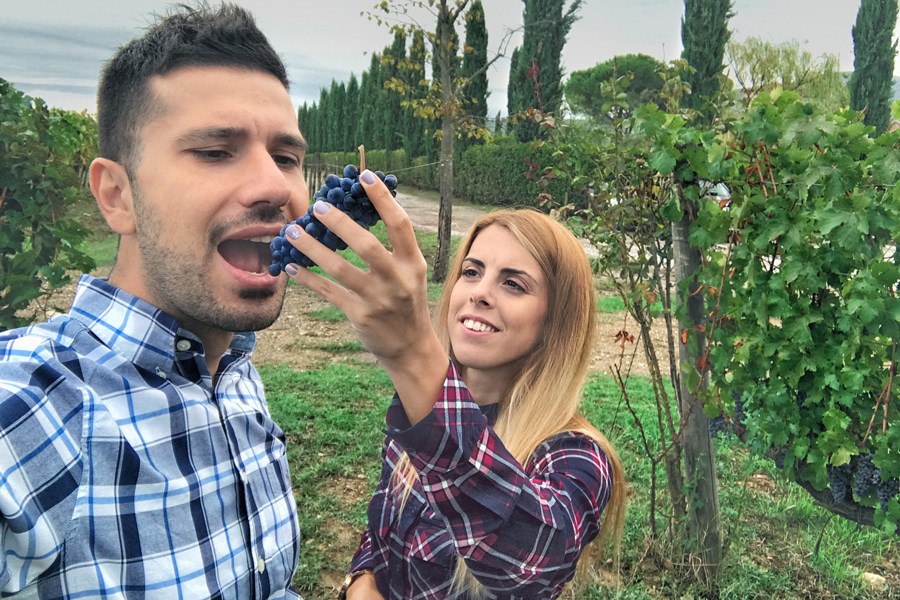
Wine tour
The first thing that comes to mind when we hear about Tuscany is the picturesque county with the thousands of vineyards. As expected, getting to know the local wine-culture is a must. The tour in the world of wine (Wine tour) may be simple, with a walk around the vineyards and some wine-tasting, or more complex, with a walk in the cellars and the vineyard, food, tasting of dozens of wines and many gifts. The prices, of course, range according to the variety. There are dozens of wineries and many many packages. Notice: You should make reservations at least 1 week before your visit, otherwise you might not find a spot or –even worse- pay double…Bottoms up.
Suggested visit time: 3-5 hours
Open: Every day
Cost: 100-450€ / person
![]() The know it all says: Italy is the first country worldwide in wine production!
The know it all says: Italy is the first country worldwide in wine production!
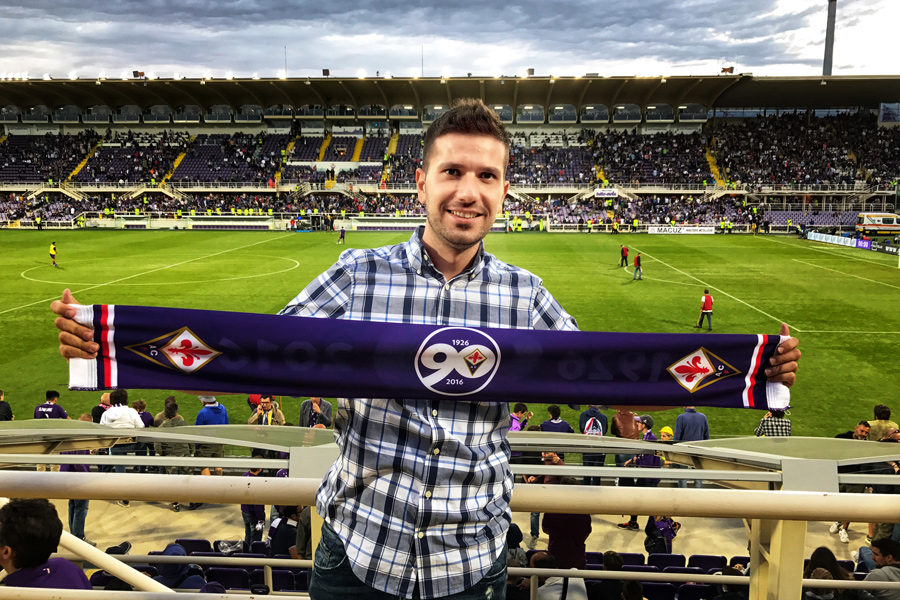
Artemio Franchi Stadium (Fiorentina FC stadium)
The historic Artemio Franchi stadium has been hosting football matches for more than eight decades (!). It belongs to the city’s official team –Fiorentina FC- and it is a great choice for you to feel the rhythm of the Serie A. The Violas’ old stadium is not “noteworthy”, as both its exterior and interior are not in good condition. But the affordable tickets encourage those who love the sport and want to have a first contact with the Italian championship. For tickets visit ONLY the official –collaborating- website of the team. Finally, it is worth mentioning that the stadium occasionally hosts American football matches, which, as a matter of fact, are very popular.
Suggested visit time: 2-3 hours
Open: Every Sunday, during home ground games
Cost: 20-200€ (depending on the seat)
![]() The know it all says: Just two years after its construction, it hosted matches of the World Cup (1934)!
The know it all says: Just two years after its construction, it hosted matches of the World Cup (1934)!

Campo de’ Fiori Market
It is the city’s most well-known street market, which hundreds of Romans visit daily, in order to buy the essential goods for their table. On the stalls you will find dozens of local products, like pasta, cheeses, cured meats, fruit, flowers, kitchen items and more. The Campo de’ Fiori market, having a strong Italian scent, helps visitors rid themselves of their tourist identity and feel like locals. Intertwine with the crowd, try some authentic parmesan and feel like original Romans, even if for a little while. In the surrounding area you will find lots of tourist shops to drink some coffee and relax. In the evening, the square is transformed into yet another romantic piazza, with the music and nice mood stealing the scepters from the mozzarella and cherry tomatoes.
Suggested visit time: 40-50 minutes
Open: Monday-Saturday 06:00-14:00. Closed: Sundays
Cost: Free
![]() The know-it-all says: It is the oldest market in the city!
The know-it-all says: It is the oldest market in the city!

Stibbert Museum
In a quiet neighborhood, outside of the city center, you will find the Stibbert museum. It is a special museum, which includes a vast collection of armors, weapons, paintings and uniforms of knights and prominent figures. It is quiet, due to low visit rates, while part of it is housed in the residence of the very wealthy collector F. Stibbert. The tour takes place with the help of a guide, who performs the main presentation of the exhibits in Italian (only general information is provided in English). So, if you do not speak the language, let your imagination flow. Upon finishing the tour -1.5 hours- do not miss the chance to take a walk around the museum’s gardens, which are filled with small temples, caves and fountains.
Suggested visit time: 1.5-2 hours
Open: Monday-Wednesday 10:00-14:00, Friday-Sunday 10:00-18:00 Closed: Every Thursday, January 1st, May 1st, Easter Sunday, August 15th & December 25th
Cost: Standard 8€, Children 4-12yo 6€, Children -4yo Free, Free with the Firenze Card.
![]() The know it all says: The collection includes around 50,000 artifacts!
The know it all says: The collection includes around 50,000 artifacts!
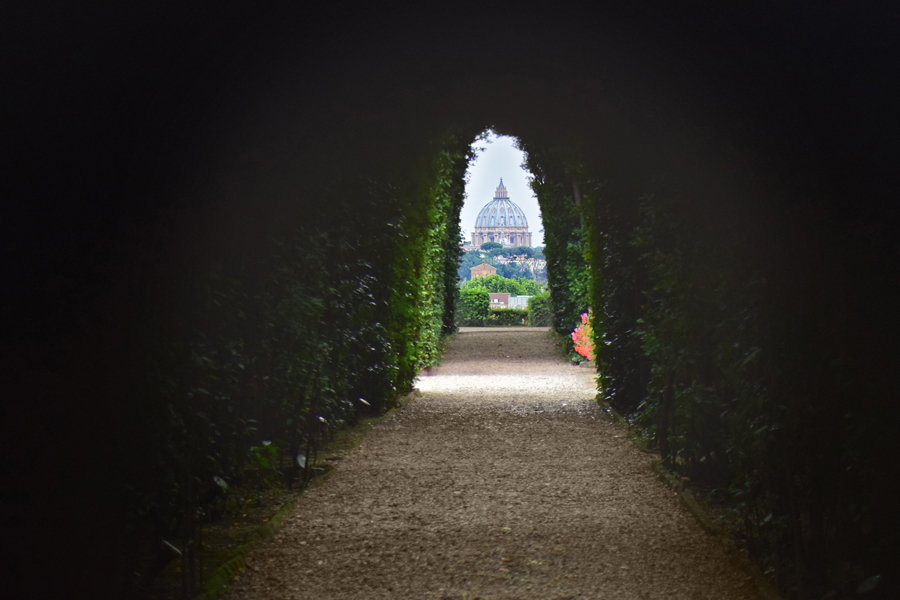
Aventine Hill & Keyhole (Knights of Malta)
If you are in Trastevere and are in the mood for a short walk, we have the best choice for you. Get across the other side of Tiber and ascend the Clivo di Rocca Savella. Through a quaint, cobblestone path you will meet the luscious green Aventine hill, which, although located very close to the center, has managed to maintain the serenity and quiet of the past. Its position offers a panoramic view of the city, with the eye wandering even farther than the Vatican. In the central street of Santa Sabina you will find the grotesque mask, while in the villa of the Knights of Malta awaits the famous keyhole. Being perfectly aligned with the Basilica of St. Peter, the keyhole offers an image of rare beauty, attracting dozens of tourists daily. The view might be exquisite but make sure you are as quick as possible, so you don’t hold up those still waiting.
Suggested visit time: 40 minutes-1 hour
Open: Always
Cost: Free
![]() The know-it-all says: Although St. Peter’s Basilica is 3km away, from the keyhole it seems like it is just about 1/3 of the distance. This happens because from this perspective, all the surrounding buildings are hidden!
The know-it-all says: Although St. Peter’s Basilica is 3km away, from the keyhole it seems like it is just about 1/3 of the distance. This happens because from this perspective, all the surrounding buildings are hidden!
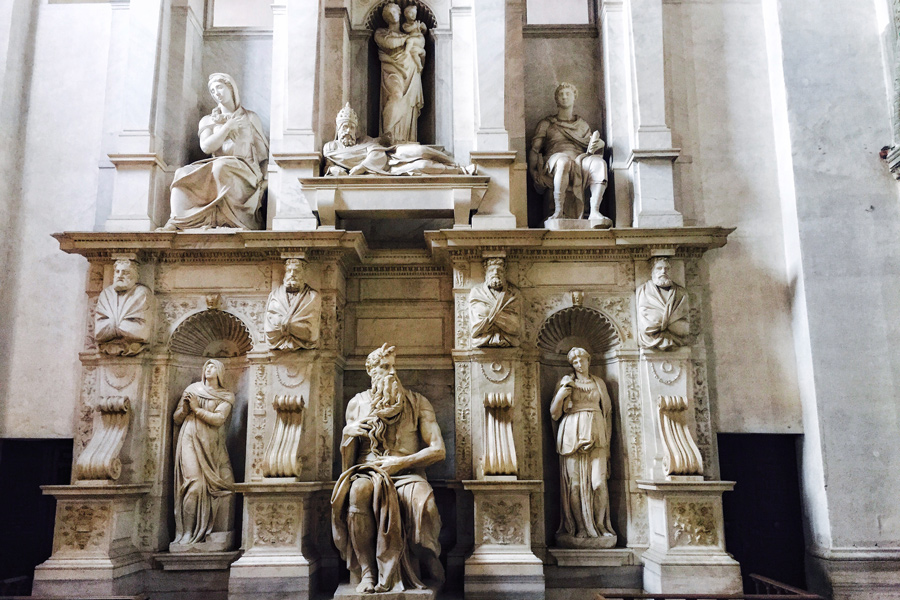
San Pietro in Vincoli
San Pietro in Vincoli is one of Rome’s most significant churches, as it hosts two of the greatest heirlooms of world heritage. The first one is the sculpture of Michelangelo, “Moses” who has returned from Mount Sinai holding the Ten Commandments*. It is also said that the profile from the lips down is a self-portrait of the artist himself. The second important heirloom is the chains that were used to capture St. Peter in Jerusalem and Rome. It is also claimed that the two chains where united into one during their placement in the reliquary. As for the church’s interior, it is small and plain, without the excess of Laterano and the grandeur of St. Peter. Do not pass by the wonderful mural (left of the entrance) that depicts the litany against the plague, which hit the city in the 15th century.
*In his face you can see the rage he feels for the people dancing around the Golden Calf.
Suggested visit time: 40-50 minutes
Open: Every day 08:00-12:30 & 15:00-18:00
Cost: Free
![]() The know-it-all says: The dent on Moses’ knee came from a tool that Michelangelo threw!
The know-it-all says: The dent on Moses’ knee came from a tool that Michelangelo threw!
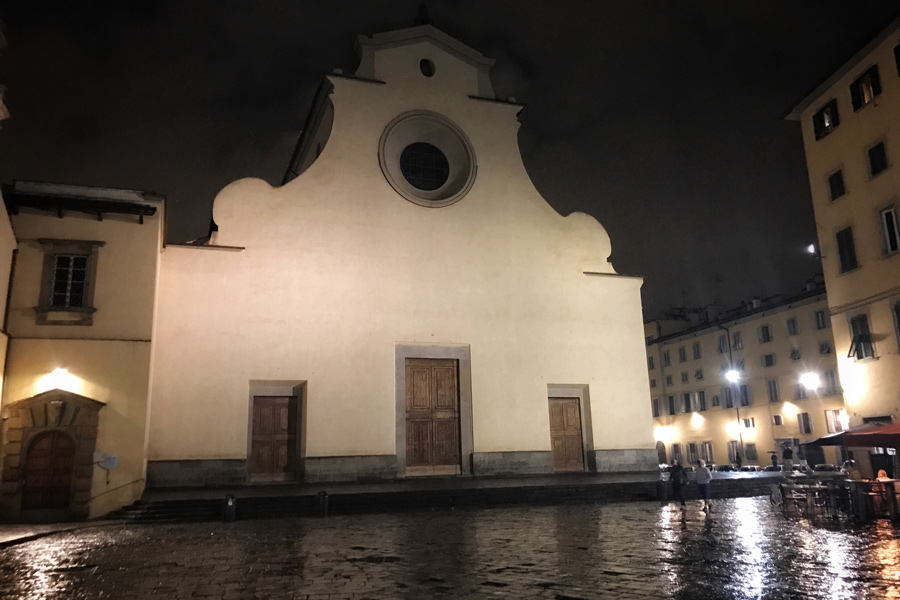
Oltrarno District
On the south side of the Arno River there is the well-known, yet unknown, Oltrarno district. You will certainly meet its rich and regal side, as it includes the impressive Boboli gardens, the Palazzo Pitti, villas, museums, as well as the famous Michelangelo square. But if you walk away from the streets of the church of the Holy Spirit, you will encounter a different neighborhood, which has maintained the old, traditional atmosphere of Florence. The tour brought to our minds moments of Rome’s Trastevere, as the two neighborhoods have many things in common. Houses, narrow alleys, small shops and restaurants with local products compose a quaint Italian picture that simply has to get in your travel photo album. Visit it during the day but especially at night, as then you will have the chance to have fun with the locals (Piazza Santo Spirito).
Suggested visit time: 2-3 hours
Open: Always
Cost: Free
![]() The know it all says: The Arno River is 241km long; it is the largest river in Tuscany and the third largest river in Italy!
The know it all says: The Arno River is 241km long; it is the largest river in Tuscany and the third largest river in Italy!
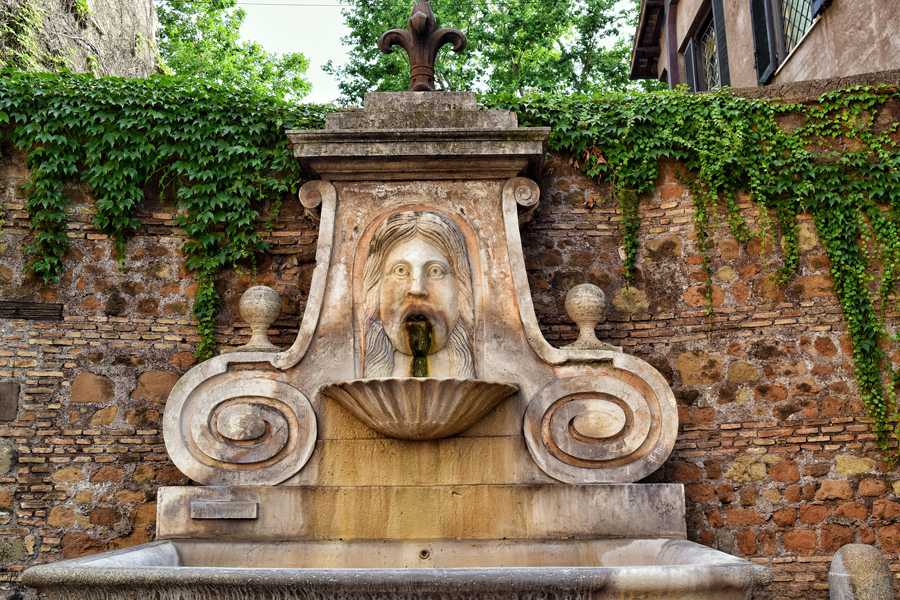
Fountain of the Mask & Sofas (Via Giulia), Campo Marzio
A walk in the neighborhoods of Campo Marzio is a must if you want to escape the tourist paths and meet the Renaissance side of Rome. In the neighborhood you will find a great uniformity which is reflected by both the baroque buildings and its general structure. In the area, among other things, there is also the famous Via Giulia street. There, apart from the most beautiful Renaissance palaces of the city, you will see the stone “sofas” (on number 62), while a bit down the road you will meet the preeminent arch with the ivy (no262), as well as the renowned Mascherone Fountain with the largest Roman Mask in the city (no 252)! Get away from the tourist trivialities and take a walk, quiet and different from the usual.
Suggested visit time: 30-40 minutes
Open: Always
Cost: Free
![]() The know-it-all says: The stone “sofas” are remnants of a grand courthouse that started to be constructed in the 15th century in honor of Julius II!
The know-it-all says: The stone “sofas” are remnants of a grand courthouse that started to be constructed in the 15th century in honor of Julius II!
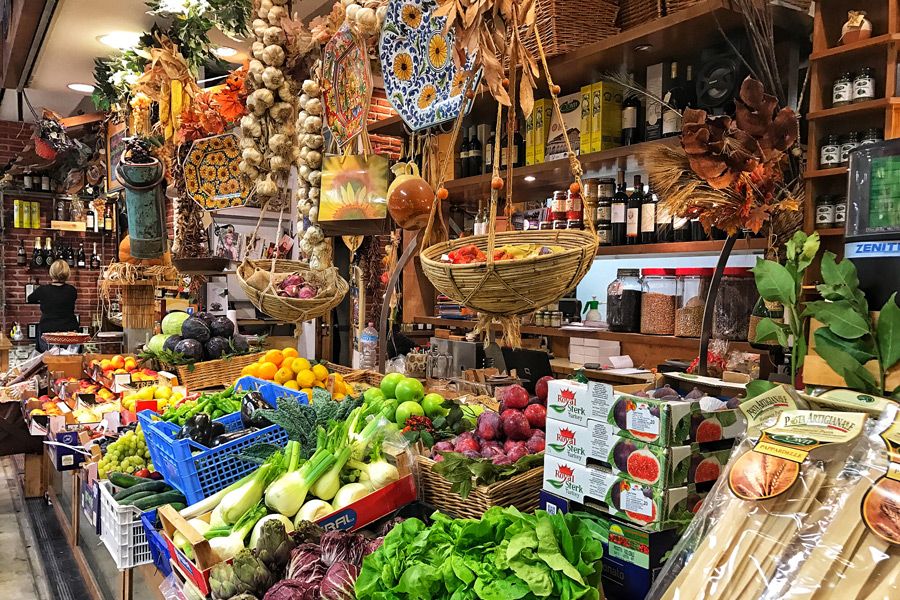
Mercato Centrale
If you are looking for a place where you can taste and buy traditional products, the only thing you have to do is visit the central municipal market. It is located very close to the cathedral (Duomo), and it is favored both by locals and tourists. Entering the space, the smells and scents will open your appetite, while you will not be able to decide what to pick first, due to the wide variety. On the ground floor of the covered market there are booths with an array of fresh vegetables-fruits, dairy products and meats, while on the first floor you will find the renovated space with the dozens of restaurants. Around the Mercato Centrale is the open market of San Lorenzo, where you will find leather items and souvenirs. Visit it to try local delicacies and feel like a local.
Suggested visit time: 3-4 hours
Open: Market (ground floor): Monday-Friday 07:00-14:00, Saturday 07:00-14:00 & 16:00-19:00 Dining area (1st floor): 08:00-00:00
Cost: Free
![]() The know it all says: It was built by Giuseppe Mengoni, the Italian architect who also designed the Galleria Vittorio Emanuele II in Milan!
The know it all says: It was built by Giuseppe Mengoni, the Italian architect who also designed the Galleria Vittorio Emanuele II in Milan!

Tiberina (Island of Tiber river)
The island of Asclepius, or Tiberina, as it is widely known, used to be an important medical and religious place in the ancient times. It is united by two bridges, one of which connects it with the Ghetto neighborhood and the other one with Trastevere. Nowadays, it continues to host a medical (hospital) and a religious space (church), preserving the tradition, while at the same time working as a small pleasant oasis in this tourist metropolis. It is a great place for an afternoon walk (especially when the weather is nice) among the peacefulness of the pine trees and Tiber’s waters. If you are lucky, you might encounter the festival (Lungo il Tevere Roma) that takes place on Tiber’s banks, or the outdoor cinema festival, Isola del Cinema.
Suggested visit time: 1-2 hours
Open: Always
Cost: Free
![]() The know-it-all says: It is not the only island in Tiber. The second one is the mystery island (Sacra island)!
The know-it-all says: It is not the only island in Tiber. The second one is the mystery island (Sacra island)!

Ognissanti Church
West of the historic center, outside of the tourist pathways, you will find the Ognissanti Church. It is a small and quiet church, which only a few know, but which manages to impress everyone once they visit it. It graces the homonymous square with an externally ordinary appearance, but its interior is adorned with some excellent works of art, such as the last supper by Ghirlandaio, Giotto’s crucifixion and Botticelli’s tomb. The serenity and simplicity combined with the colors and the frescos create a unique atmosphere of reverence, hard to experience in the tourist-filled churches of the center. Try to visit it, even if it is out of your way, while if you are lucky you might stumble upon a wedding or event.
Suggested visit time: 30 minutes-1 hour
Open: Chapel: Monday and Saturday 09:00-13:00 Church: Every day 09:30-12:30 & Wednesday 16:00-17:00
Cost: Free
![]() The know it all says: Botticelli was buried at the feet of his beloved Simonetta, 34 years after her death!
The know it all says: Botticelli was buried at the feet of his beloved Simonetta, 34 years after her death!
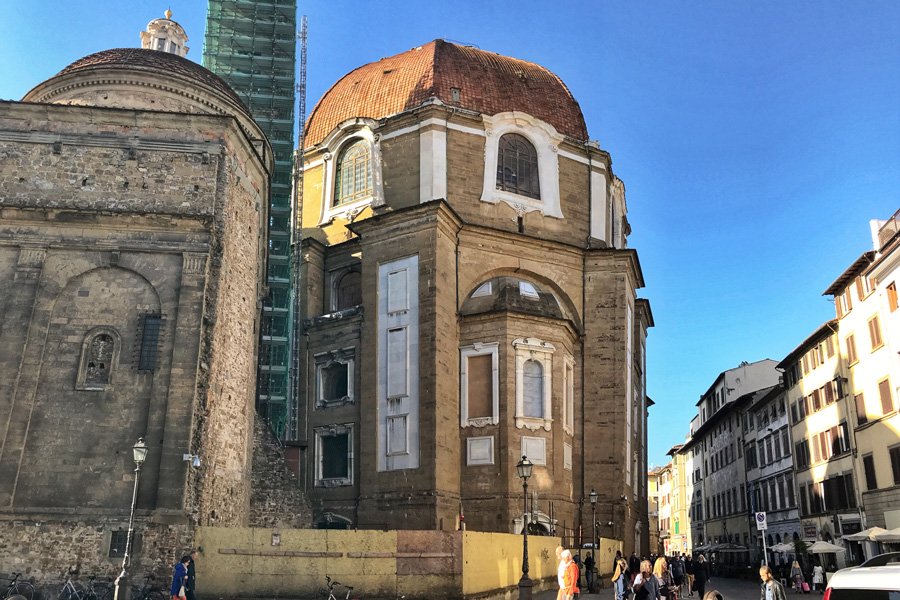
Medici Chapel
Florence is called by many “The city of the Medici”, due to the role that their house played in the history of the city. So, in the Basilica of San Lorenzo you will find the family’s mausoleum, also known as the Medici chapel. You can enter only through the church, this is why you should be informed about the opening hours of both. The chapel consists of three parts, the most major ones being the Cappella dei Principi, with the fancy ceiling fresco, and the Sagrestia Nuova with the three great sculptures crafted by Michelangelo for the Medici family. Visit it early in the morning or before closing, as the space is narrow and a crowded tour is not a pleasant one.
Notice: It is quite expensive if you do not have the Firenze Card and you will be disappointed by the construction work taking place.
Suggested visit time: 1 hour
Open: Every day 08:15-18:00 Closed: The 2nd and 4th Sunday / the 1st, 3rd and 5th Monday of every month, January 1st, May 1st and December 25th
Cost: 8€, reduced 4€, Free with the Firenze Card.
![]() The know it all says: The Medici family hosted and supported many young artists and scientists, such as Michelangelo, Botticelli and Galileo!
The know it all says: The Medici family hosted and supported many young artists and scientists, such as Michelangelo, Botticelli and Galileo!

Basilica di Santa Maria Maggiore
One of the four largest cathedrals in Rome is Santa Maria Maggiore. It is located close to the terminal station (Termini), so both the square and the surrounding area are full of people, all the time. It is a gem of a church, which has the tallest bell tower in the city, at 75 meters. It is said that it is the Popes’ favorite church, even more so than St. Peter’s Basilica! In its interior, what draw all the looks are the golden paneling of the ceiling and the 40 gigantic columns that support it. The ideal day and time to visit it is Sunday at 11, so you get a taste of the service and feel the absolute reverence of the space, as well as the ceremony. You should not disregard that entrance is prohibited to women who are not modestly dressed.
Suggested visit time: 40 minutes-1 hour
Open: Always
Cost: Free
![]() The know-it-all says: The world’s oldest Nativity scene is housed here!
The know-it-all says: The world’s oldest Nativity scene is housed here!

Bardini Villa & Gardens
In the Oltrarno district, between the Boboli gardens and the Michelangelo square, you will find the Bardini Villa and its gardens. Even though it is very easy to go past its entrance, as it is not different from the buildings of the neighborhood, a small sign will show you the way. The 60 rooms of the villa host temporary exhibitions and two small museums. The decoration as well as the number of exhibits compared to the fee might disappoint you. What will certainly not let you down is the panoramic view of Florence and its lush green gardens. Steal some time to walk among the narrow streets and enjoy the quiet, away from the crowds of the city center.
Suggested visit time: 1-2 hours
Open: Villa: Tuesday-Sunday 10:00-19:00 / Gardens: 08:15-16:00 (winter season), 08:15-19:30 (summer season) Closed: Villa: Every Monday / Gardens: The first and last Monday of every month, January 1st, May 1st and December 25th
Cost: Villa: 8€, reduced 6€ / Gardens: 10€ (it includes access to some museums of Palazzo Pitti and the Boboli gardens), reduced 5€, Free with the Firenze Card.
![]() The know it all says: Inside the gardens you will find 60 different species of hydrangea!
The know it all says: Inside the gardens you will find 60 different species of hydrangea!
Travelen.eu is regularly updated on ticket costs and operating hours, but you should always visit your choice of destination’s official site for confirmation.

Piazza del Popolo & Gate
The big oval Piazza del Popolo combines the French architectural style with the Roman excess. It is located next to Villa Borghese, while the gate on its north side used to be one of the main entrances of the city. At its center stands the towering Egyptian obelisk, while the fountains and various statues (the most characteristic being the ones of Poseidon and Athena) perfectly compliment the plain and delightful setting. The square is quite the tourist attraction with swarms of people gathering all day long and numerous street vendors trying to sell from gadgets and flowers to water! Do not miss the chance to capture it from every angle (see the best one HERE), but you should avoid the cafés around it, as they are nothing more than tourist traps. On its south side, a Ferrari has the engine running, waiting for the lovers of luxury and speed for a (expensive) ride.
Suggested visit time: 40 minutes-1 hour
Open: Always
Cost: Free
![]() The know-it-all says: The charming square was once a place of bloodshed, as it used to be one of the largest spaces for public executions!
The know-it-all says: The charming square was once a place of bloodshed, as it used to be one of the largest spaces for public executions!

Largo di Torre Argentina & Pyramid of Cestius
The next two More suggestions are recommended for a quick visit, as you can admire them only from the outside. In the historic space of Largo di Torre Argentina there are the ruins of four Roman temples, while nowadays it is the largest shelter for the city’s cats. It went down on history as the location where one of the greatest Roman emperors, Julius Caesar, was murdered. At a 2,5km distance you will find the 36-meter tall pyramid, which was built as the mausoleum of Gaius Cestius. One might wonder…A pyramid in the middle of Rome? It may seem odd, but it is fairly reasonable, as Egypt was a Roman province at that time. Finally, it is worth noting that the 2,000-year-old pyramid managed to be kept in such a great shape because it was located inside the city walls.
Suggested visit time: 30 minutes-1 hour
Open: Always
Cost: Free
![]() The know-it-all says: The huge pyramid took less than a year to be completed, as in case it took more time, Gaius’ heirs would lose his fortune!
The know-it-all says: The huge pyramid took less than a year to be completed, as in case it took more time, Gaius’ heirs would lose his fortune!

Domine Quo Vadis (footprints of Jesus)
This is a small chapel located at the start of Via Appia and has a great history, as according to the sayings of Saint Peter, this was the place where he met Jesus, as he was trying to escape the city (during the time of persecutions). When he asked him “Lord, where are you going?” (Latin: Domine Quo Vadis), Jesus answered “To be crucified again”. This phrase was enough to convince Peter to go back to Rome. The chapel is also known for the footprints that were found on a marble plate* and it is said that they are the footprints of Jesus Christ. It is worth devoting some of your time before walking down the historic Via Appia.
*The one you will see is a replica. The original is in the San Sebastiano church.
Suggested visit time: 15-30 minutes
Open: Every day 08:00-19:00
Cost: Free
![]() The know-it-all says: Travelers used to come by this church to ask for God’s help, in order to return safe!
The know-it-all says: Travelers used to come by this church to ask for God’s help, in order to return safe!
Travelen.eu is regularly updated on ticket costs and operating hours, but you should always visit your choice of destination’s official site for confirmation.